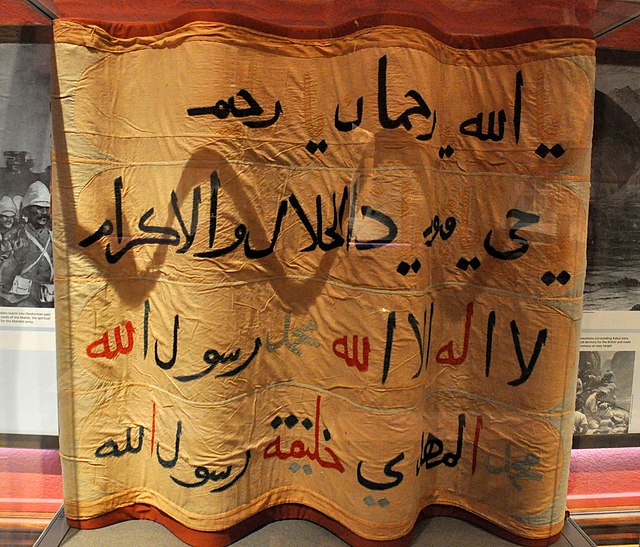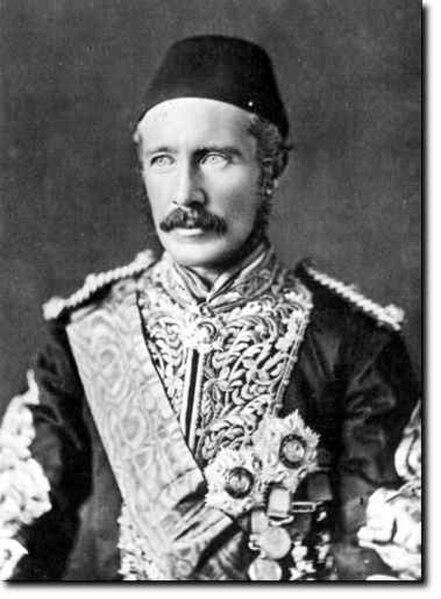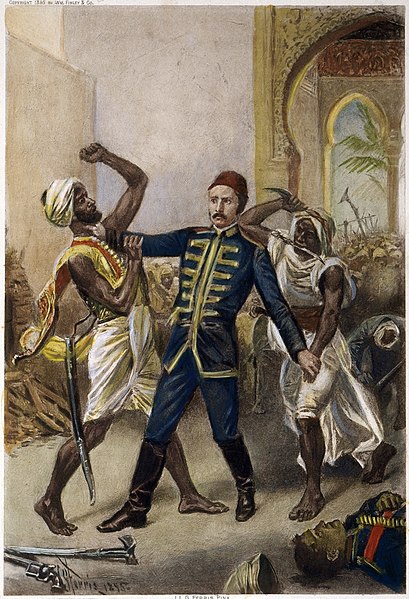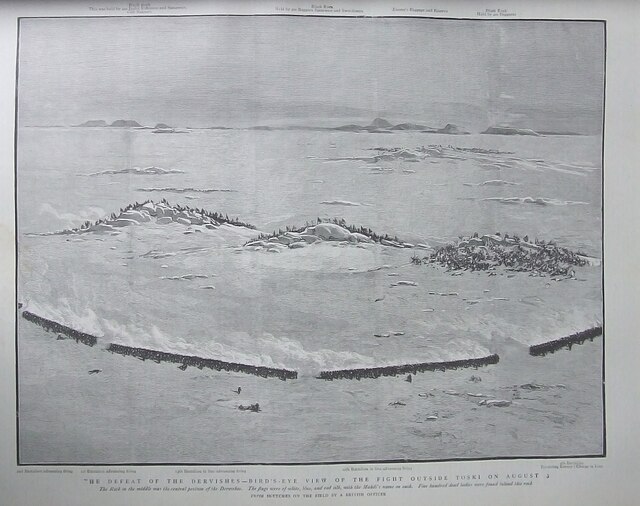The Mahdist War was a war between the Mahdist Sudanese, led by Muhammad Ahmad bin Abdullah, who had proclaimed himself the "Mahdi" of Islam, and the forces of the Khedivate of Egypt, initially, and later the forces of Britain. Eighteen years of war resulted in the creation of Anglo-Egyptian Sudan (1899–1956), a de jure condominium of the British Empire and the Kingdom of Egypt in which Britain had de facto control over Sudan. The Sudanese launched several unsuccessful invasions of their neighbours, expanding the scale of the conflict to include not only Britain and Egypt but also the Italian Empire, the Congo Free State and the Ethiopian Empire.
Depiction of the Battle of Omdurman
Muhammad Ahmad, the self-proclaimed Mahdi
This banner is a declaration of faith and allegiance into Allah, and was carried into battle by the Sudanese Mahdist Army. The color of the banner identifies the fighting unit. From Omdurman, 1898. The Kelvingrove Art Gallery and Museum, Glasgow, UK. Given by Miss Victoria MacBean, 1929.
Charles Gordon as Governor of the Sudan
The Mahdist State, also known as Mahdist Sudan or the Sudanese Mahdiyya, was a state based on a religious and political movement launched in 1881 by Muhammad Ahmad bin Abdullah against the Khedivate of Egypt, which had ruled Sudan since 1821. After four years of struggle, the Mahdist rebels overthrew the Ottoman-Egyptian administration and established their own "Islamic and national" government with its capital in Omdurman. Thus, from 1885 the Mahdist government maintained sovereignty and control over the Sudanese territories until its existence was terminated by the Anglo-Egyptian forces in 1898.
Muhammad Ahmad al-Mahdi
A 20 qurush coin minted during the reign of Abdallahi ibn Muhammad.
"Death of General Gordon at Khartoum", by J.L.G. Ferris
The defeat of the Dervishes at Toski








